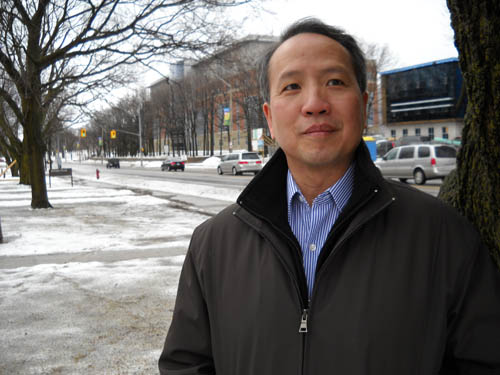
After hours, he’s used yeast to make wine for more than two decades. But as the head of a two-year-old national research network based at U of G, Prof. Hung Lee harnesses those “micro-brewmasters” to ferment renewable alternatives to fuel thirsty gas tanks.
The professor in the School of Environmental Sciences (SES) is scientific co-director of the NSERC Bioconversion Network, begun in 2009 with a five-year, $5-million grant from the Natural Sciences and Engineering Research Council. The group’s researchers seek ways to make ethanol out of waste biomass from forests and farms, holding out the promise of new fuels and industrial chemicals.
With concerns over oil prices and energy security attracting more headlines in Canada and the United States, says Lee, we need new fuel sources to keep vehicles and other machinery running.
North American laws currently require ordinary gasoline to contain five per cent ethanol (two per cent for diesel fuel). Most of that ethanol now comes from corn, which has prompted controversy over using crops for fuel or food.
Using residues from pulp and paper and farming ─ wood chips and other plant wastes ─ to make cellulosic ethanol will help avoid that dispute, says Lee. The challenge for Bioconversion Network researchers: how to harness micro-organisms to break down tough plant material and convert it to energy.
Cellulosic ethanol comes from tough structural sugars in plants rather than from more malleable storage sugars like the starch used to make corn ethanol. Those structural carbohydrates in plants are various celluloses, hemicelluloses and lignins. “Ligno-cellulose is the most abundant renewable organic substance on Earth,” says Lee.
So far, almost no cellulosic ethanol is available as fuel in Canada; Iogen Corp., an Ottawa biotech company, has sold some from its demonstration plant to a Shell Canada gas station in the capital.
Bioconversion Network researchers study aspects of pretreatment, or forestry companies’ use of pressure, heat and chemicals to break down wood in papermaking. Other scientists, including geneticists and microbiologists, look at improving enzymes made by microbes and pumping up yeast fermentation.
Yet other researchers use economic analysis to figure out how and where to improve bioconversion processes. “A big unknown is economics,” says Lee, explaining that the market for this fuel depends largely on conventional oil and gas prices.
He studies yeasts used to ferment some of the pentose sugars in plant biomass. Before coming to Guelph in 1986, he studied five-carbon sugars in a National Research Council lab where the first pentose-fermenting yeast was discovered 30 years ago.
The Bioconversion Network involves 13 researchers at six Canadian universities: Guelph, Toronto, Concordia, Queen’s, Alberta and British Columbia. One collaborator is at the University of Wisconsin, Madison. Lee’s scientific co-director is Jack Saddler, a biochemist and microbiologist at the University of British Columbia.
Here at Guelph, Lee’s network colleagues are SES professors Jack Trevors and Marc Habash. The group also funds young researchers, including several post-docs and grad students at U of G.
The group’s partners are government departments and industry, including forest products company Tembec, Lallemand Ethanol Technology, Mascoma Canada and GreenField Ethanol.
Lee says the network focuses on biological processes to make biofuels. That approach complements studies of biomaterials made from plant parts in Guelph’s Bioproducts Discovery and Development Centre, headed by plant agriculture professor Amar Mohanty.
Improving enzymes for making cellulosic ethanol is also the topic of a joint research project by Guelph microbiologist Anthony Clarke, physicist John Dutcher and chemist Jacek Lipkowski. Their three-year-old project with Iogen just received new federal funding intended to help make cellulosic ethanol more economically viable.